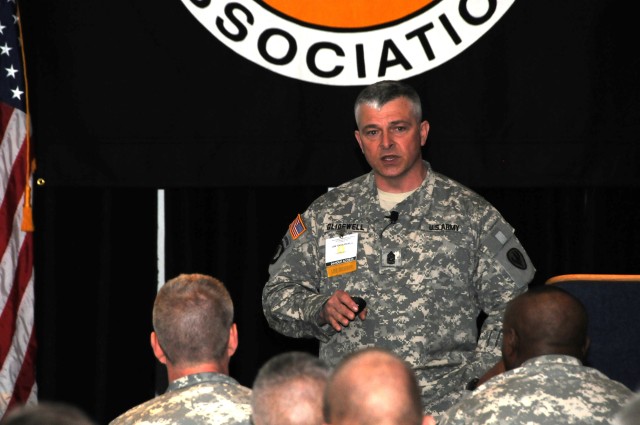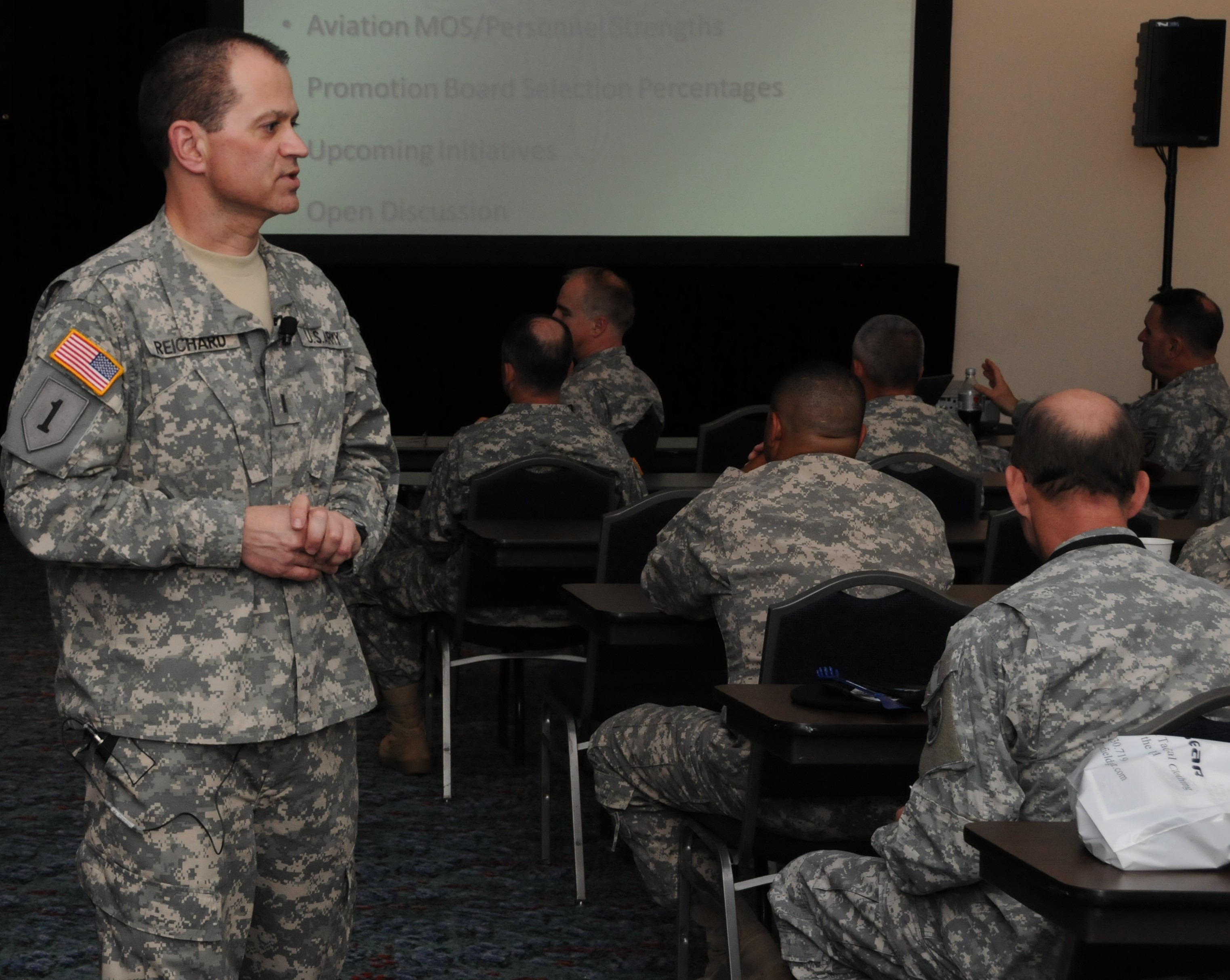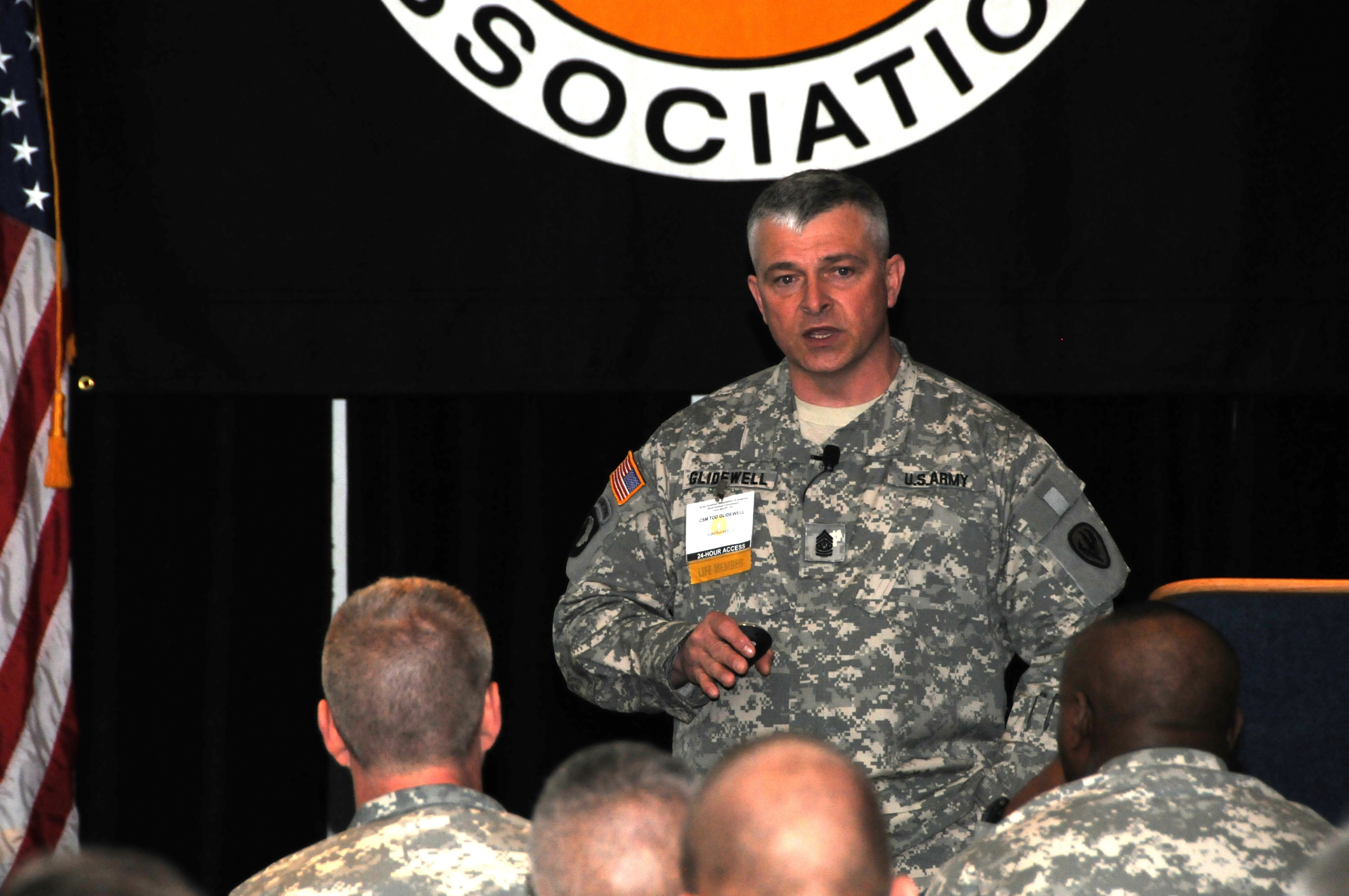FORT WORTH, Texas -- CWO5 Jeffrey Reichard, Army Aviation's Chief Warrant Officer of the Branch, talked to a gathering of his peers at this year's Army Aviation Association of America's annual conference April 15.
Reichard announced that the results from this year's CWO3, 4 and 5 promotion board will be released Army-wide on April 20. He said promotion percentages should stay the same or drop some hovering around the 2009 levels of approximately 68 percent for CWO3s, 90 percent for CWO4s and 50 percent for CWO5s.
Reichard also addressed the need for the Warrant Officer Corps to pay attention to their professional military education.
"PME is extremely important, we're doing better with attendance but there is still a lot of room for improvement," he said.
Reichard added that he understood with the OPTEMPO and short dwell times for Combat Aviation Brigades that PME can become something that is thought of as a hassle.
"That's why we now can send out Mobile Training Teams when we're asked, these teams can come to a unit to train a group of Warrant Officers who need their PME rather than a unit sending them each to Fort Rucker for weeks," he said. "It helps them and their families, giving them as much time at home as possible."
He then talked to the group of Warrant Officers about the new standards for selection to the Warrant Officer Corps.
"We currently select 60 percent of our new Warrant Officers from inside the Army and 40 percent of them from the civilian world," he said. "We currently have a document awaiting signature by the Army G1 that will change that to a 50-50 split."
He added that most of the applicants for "street to seat" selection already have four-year degrees, a change from the past.
Aviation Branch Command Sgt. Maj. Tod L. Glidewell spoke in an April 15 afternoon session about Army Aviation's priorities and issues for enlisted Soldiers.
One of the top issues facing the Branch is the building, stationing and deployment of two Combat Aviation Brigades by fiscal year 2013, Glidewell said.
"There's a bright future with Army Aviation as we build two new CABs. The future of this branch rests with those mid-grade noncommissioned officers and enlisted Soldiers that have six to 12 years in this Army. We have to keep the very best in our ranks," Glidewell said.
Glidewell said the Branch's ability to be successful depends on the quality of NCOs to provide the leadership and training for the future, as the Branch prepares to provide the manning for new CABs in the near future.
"They're the ones who are going to train the Soldiers that are going to man these new brigades," Glidewell said.
One integral role of Army Aviation enlisted Soldiers is serving as unmanned aircraft systems operators in theater. The knowledge and experience these Soldiers gain downrange is something the Army will continue to capture to train future UAS operators.
Priorities for enlisted Soldiers included training for new starts (Ch-47F Chinook and UH-60M Blackhawk), military training team schedules for fiscal year 2011 and beyond, establishing a new assignment system for command sergeants major and sergeants major, and increasing throughput of the U.S. Army Aviation Logistics School and Unmanned Aircraft Systems Training Battalion.
Among the topics Glidewell spoke about was the Survival Evasion Resistance and Escape training offered at Fort Rucker twice a month. Glidewell called for more Soldiers to attend the school, which has slots that can be filled with Soldiers from all military occupation specialties.




Social Sharing